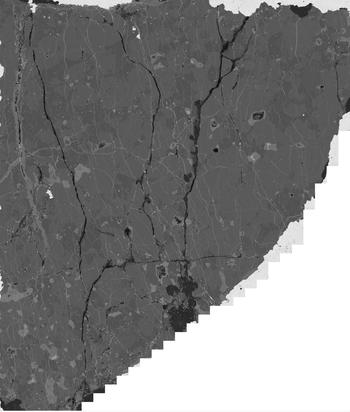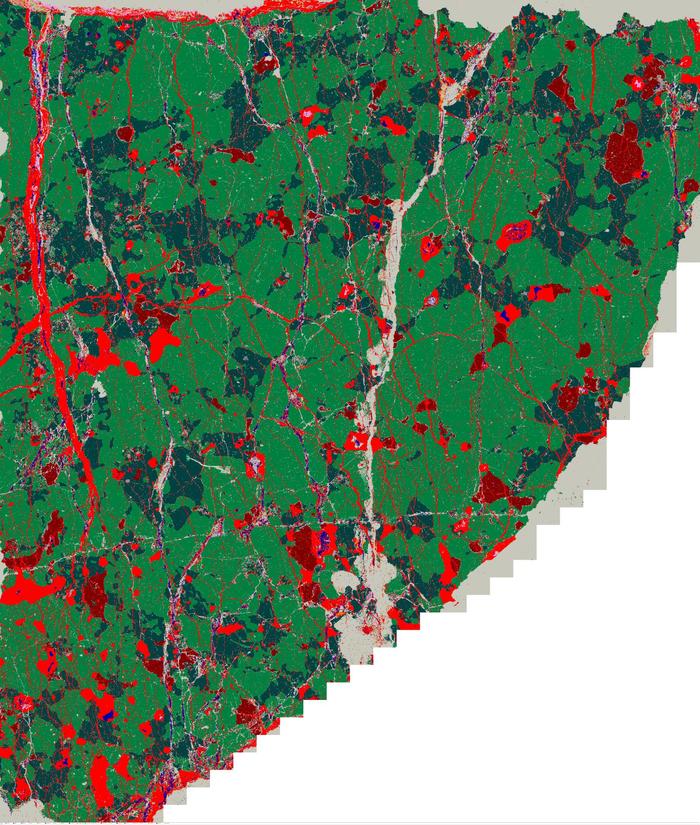Fluids and volatiles in the solar system
Different planetary materials show variable degrees of volatile element depletions, the origin and timing of which are still debated. We investigate carbonaceous chondrites, the components of the remnant material of planetary formation, and use stable isotope signatures of volatile metals to understand the origin of these depletions.
Role of volatile elements in planetary materials
All planetary materials are depleted in volatile elements to various degrees. However, the origin and mechanisms of these depletions are not yet understood. Carbonaceous chondrites, a class of undifferentiated meteorites and remnant material of the early stages of planet formation, can be used to help constrain processes in the solar nebular. For some moderately volatile elements in these meteorites, correlations between stable isotope composition and degree of depletion have been observed.
Do these trends also correlate with varying abundances of chondrite components in the different carbonaceous chondrite groups? How do refractory inclusions, the oldest components of these meteorites, contribute to the volatile element budget and stable isotope composition of their bulk rock? In which environment were volatile elements incorporated into these inclusions? Did the processes responsible for these trends take place in the solar nebula, or on the parent body, or both? Did planetary materials inherit their volatile element depletions from undifferentiated planetary building materials? If there is a correlation between meteorite component abundances and bulk composition of meteorites, can it potentially be extended to Earth?
We use stable isotope compositions of some volatile metals in individual refractory inclusions to understand the processes affecting the moderately volatile composition in these components and the environment in which they took place. Electron microbeam analysis will provide petrologic context to the geochemical observations by characterizing the mineralogy and textures of the inclusions and the distribution of the elements in question.
This project is part of the TRR 170 “Late accretion onto terrestrial planets”
Hydrothermal Processes in the Solar System
Alteration of planetary bodies is a key process that controlled the evolution and transport of volatiles in the early solar system. These processes are today stored within meteorites and thus allow the tracking of fluid-rock interaction processes during the formation and early evolution of the planetary bodies. In this project we perform detailed mineralogical and petrological investigations together with in situ sulfur isotope analyses, analyses of carbonaceous matter to determine temperatures of water-rock interaction, as well as Mn/Cr dating. This data provides new insights into the source and extent of the thermal history, the timing and source(s) of hydrothermal alteration and to investigate the origin of sulfide phases within different types of meteorites. Initial data suggests that the hydrothermal alteration most likely took place at <100°C and that this was a near-contemporaneous event among different parent bodies in the outer solar system. Our data suggests that this process was most likely caused by 26Al decay that would have release enough heat to produce a hydrothermal fluid.
Further reading: Visser et al. (2018); Visser et al. (2019); Patzek et al. (2020)
Automated Mineralogy of Meteorites
The search for suitable mineral phases to be used in in situ isotope analysis is greatly facilitated by the automation of imaging and mineral mapping with a Scanning Electron Microscope (SEM) using a combination of backscatter detector (BSD) and Energy Dispersive X-ray (EDX) detectors. The Zeiss Mineralogic System allows for fully quantitative EDS mapping and subsequent mineral classification of carefully selected meteorite rock chips with a resolution of 2 micron within one day (Fig.). Post‑processing with the Mineralogic Explorer allows immediate location of the grains and minerals of interest to be analyzed further with specialized equipment in other labs.

